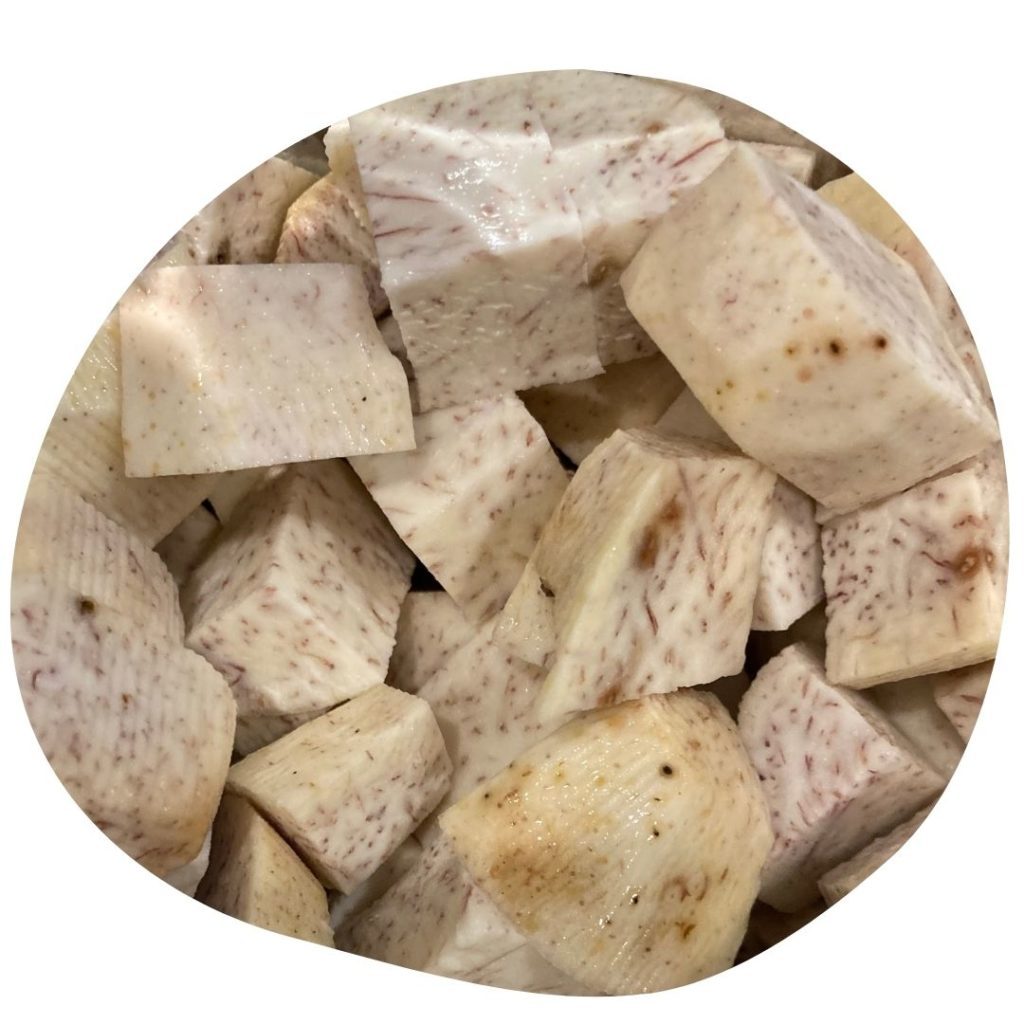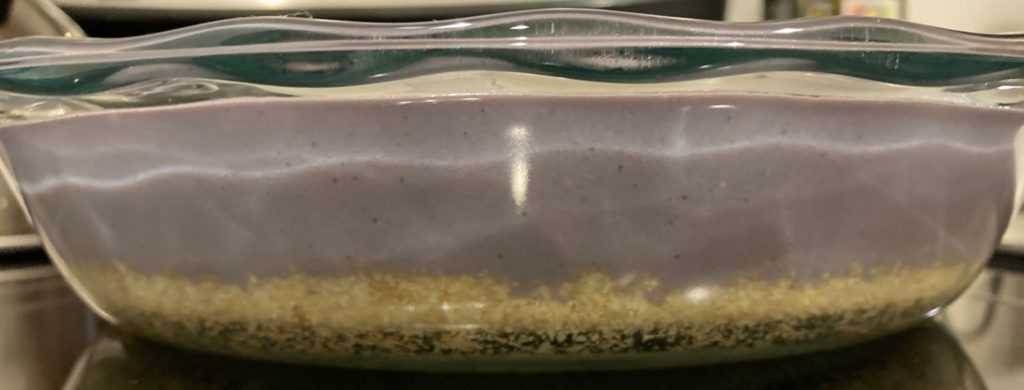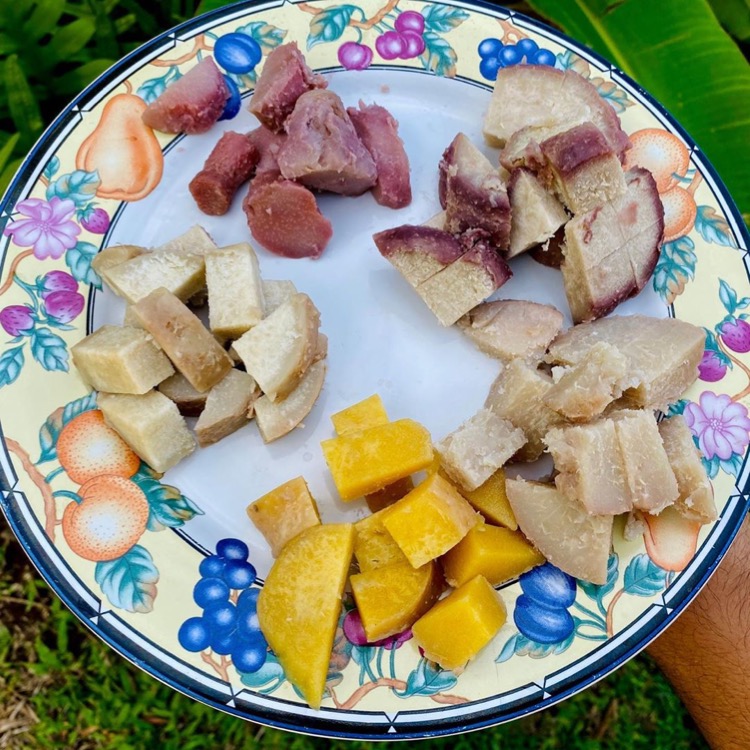Ready to make some local food swaps for your holiday meal? Kalo (taro or Colocasia esculenta) is a great local substitute for your favorite pumpkin and sweet potatoes recipes.
This Kalo Pie Recipe is a Hawaiian inspired take on a traditional desert and is guaranteed to be a hit with your friends and family! If you don’t live in Hawaii, consider purchasing pumpkin or sweet potato varieties from your local farmers market or CSA as an alternative to store bought, canned puree.
Add diced taro cubes to a large pot of boiling water. Cover and cook until taro is translucent and fork tender, about 15 – 20 minutes. First time cooking with taro? Check out steps 1-3 of this wikihow page for some important tips.

While the taro cooks, preheat the oven to 325 degrees Fahrenheit. Combine all pie crust ingredients in a medium sized mixing bowl. Mix until combined. Pour into a 9 inch pie dish and press firmly to evenly distribute the pie crust mixture into the bottom of the pie dish. Bake the crust until golden brown, 10 minutes. Remove from the oven and set aside. Increase oven temperature to 350 degrees Fahrenheit.
Drain the cooked taro and discard the water. Add taro, sugar, and vanilla to a blender and mix until smooth and fluffy. If you don’t have a blender, you can use a potato masher or hand mixer. Transfer taro mixture to a large mixing bowl. Add coconut milk and eggs, mixing until all ingredients are well incorporated. Add salt and flour and mix until combined.
Pour taro filling over cooked pie crust. Bake for 45 minutes – 1 hour at 350 degrees Fahrenheit or until pie is cooked through and the center no longer jiggles. Remove pie and let cool to room temperature before decorating.

While the pie cools, toast ½ cup of sweetened coconut flakes and chopped macadamia nuts in a non-stick pan over medium heat, stirring frequently. Top pie completely cooled pie with toasted nuts and coconut. Pipe whipped cream along the edges of the pie right before serving. Slice and enjoy!

Share your completed dishes with us on social media! Be sure to tag @ntbg on Instagram.

Did you know that kalo is one of the world’s oldest cultivated crops? Ancient voyagers traveled to Hawai’i with a sophisticated botanical toolkit which included bananas, coconut, turmeric, sugar cane, sweet potatoes, breadfruit, kalo and more.
Kalo is believed to have the greatest life force of all foods. According to the creation chant (Kumulipo), kalo grew from the first-born son of Wakea (sky father) and Papa (earth mother). Their son, Haloa-naka, was stillborn and out of his buried body grew the kalo plant, also called Haloa, which means “everlasting breath”.
The species is thought to be a native of India. However, it was in Hawai’i that the cultivation of kalo reached its most sophisticated level. Ancient kalo terraces (loi) can be seen in the Hanalei Valley, Kaua’i, and the remains of others are found in remote areas, now uninhabited, such as the Na Pali Coast of Kaua’i.
20th century monoculture made Kalo very susceptible to diseases. Approximately 87 of the more than 400 documented varieties still exist today, with slight differences in height, stalk color, leaf or flower color, size, and corm type. At our Limahuli Garden, staff are restoring an ancient system of more than a dozen kalo lo‘i which archaeologists say is over 800 years old. This colorful plate of kalo is the result of their work!
